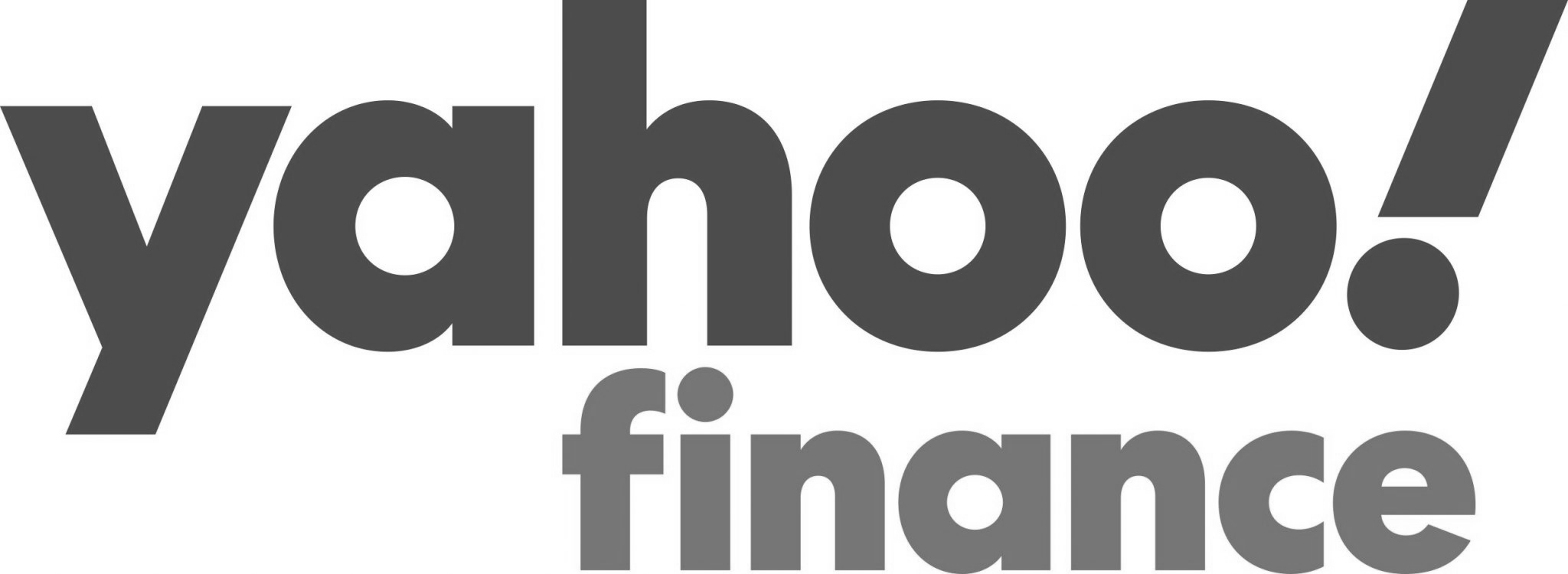US-Peru Expat Taxes: Your Essential Guide
April 9, 2025 | Country Guides | 13 minute read
Expat Tax Blog. Tax Tips for US Americans abroad.
Updated
 All blogs are verified by Enrolled Agents and CPAs
All blogs are verified by Enrolled Agents and CPAs
Updated
Many US expats choose Peru for its affordable cost of living, friendly locals, and laid-back lifestyle. Whether you want to surf in the warm waters of Mancora, experience Cusco’s rich Indigenous culture, or enjoy a cosmopolitan lifestyle in Miraflores, Peru has a place for you. But before you pack your bags, it’s important to understand how taxes work in both Peru and the US. Whether you’re working, retired, or self-employed, knowing your tax obligations can save you time, money, and headaches. From residency rules to tax credits, our US-Peru Tax Guide breaks down the essentials. Plus, we’ll cover how to legally minimize your US tax bill while staying IRS compliant. Let’s dive into the details so you can focus on enjoying your new life in Peru.
Who Needs to File US Expat Taxes?
Filing US Taxes for Your Family Abroad
US Tax Forms Every Expat in Peru Should Know
Life in Peru: What to Expect as an Expat
File Your Us Taxes With MyExpatTaxes
Who Needs to File US Expat Taxes?
You might be thinking, “surely I don’t need to file US taxes when I’ve moved abroad?”. Unfortunately, the answer is that you probably do. That’s right, if you are a US citizen or Green Card holder and your income meets the reporting threshold, you need to file your US taxes–even if you live in Peru!
For 2024 (filing in 2025), the minimum income thresholds are:
| Filing Status | Threshold |
|---|---|
| Single | $14,600 |
| Married Filing Jointly | $29,200 |
| Married Filing Separately | $5 |
| Head of Household | $21,900 |
| Qualifying Widow(er) | $29,200 |
| Self-Employed* | $400 |
*Regardless of filing status, if you are self-employed with more than $400 of net self-employment income (IRS).
For more info, see Tax Filing Thresholds for US Expats.
Filing US Taxes for Your Family Abroad
Once you determine whether you meet the minimum income threshold to file US taxes, the next step is choosing the right filing status.
Should You File Jointly or Separately?
If you’re married and living in the US, filing jointly usually offers the best tax benefits. But what if you’re living abroad—say, in Peru? Your filing status depends on whether your spouse is a US citizen.
- If your spouse is a US citizen or Green Card holder: You both must report your worldwide income and assets. In most cases, Married Filing Jointly is the best option, regardless of where you live.
- If your spouse is a non-US citizen (without a Green Card): They are not required to file a US tax return. Typically, Married Filing Separately is the best choice.
Read more: Should I File Jointly or Separately?
US Filing Deadlines
| Deadline | Date |
|---|---|
| Standard Filing Deadline | April 15th |
| Automatic Extension for Expats | June 16th |
| Deadline for Expats Filing an Extension (file by June 15th) | October 15th |
| FBAR Deadline (Automatic Extension to October 15) | October 15th |
| Deadline for Expats if You Filed a Second Extension | December 15th |
If a deadline falls on a weekend or holiday, it moves to the next business day. You can stay up-to-date with the IRS and FinCen–or you can get timely reminders into your inbox by signing up for our newsletter.
Get your email reminders about upcoming deadlines!
US Tax Forms Every Expat in Peru Should Know
Filing US taxes from abroad involves additional forms that ensure compliance with both US and international tax laws. Here are five key forms every US expat in Peru should be familiar with:
- Form 2555 – Used to claim the Foreign Earned Income Exclusion (FEIE) and reduce taxable income.
- Form 1116 – Allows expats to claim the Foreign Tax Credit (FTC) to offset taxes paid to Peru.
- Form 8812 (Child Tax Credit) – Provides a refundable credit for eligible US taxpayers with qualifying children, helping to reduce overall tax liability.
- FinCEN Form 114 (FBAR) – Required if the total balance of foreign bank accounts exceeds $10,000 at any time during the year.
- Form 8938 (FATCA)– Foreign Account Tax Compliance Act, must be filed if foreign financial accounts and assets exceed IRS thresholds.
These forms and many more are supported by MyExpatTaxes. Even better–you don’t need to know which forms you should complete! Our expat tax software will automatically generate the right forms for your individual tax situation.
Never Filed from Abroad? Catch Up with the Streamlined Procedure
If you’ve fallen behind on your tax filing, or if you were unaware of the need to file US taxes from abroad, we have some good news for you. The IRS has an amnesty program, the Streamlined Procedure, that allows you to catch up penalty-free, provided you make use of the procedure BEFORE the IRS contacts you. Simply submit 3 years of tax returns and 6 years of FBARs, along with an explanation stating that your failure to file was non-willful, and you’ll be back in the IRS’s good books.
Life in Peru: What to Expect as an Expat
It’s not just your US-Peru Expat Taxes to consider. Adapting to life in Peru comes with both rewards and challenges. Here’s what you need to know about key aspects of expat life.
Culture & Lifestyle
Peruvian culture is a blend of indigenous traditions, Spanish influence, and modern urban life. Family and community play a central role, and social interactions are often warm and welcoming. Festivals, like Inti Raymi (Festival of the Sun) and Fiestas Patrias (Independence Day), are widely celebrated with parades, music, and traditional food. However, the bureaucracy, slow government processes and inconsistent infrastructure (with occasional water or electricity cuts) can be frustrating for expats.
Spanish is the official language, and while English is spoken in tourist areas and by some professionals, most day-to-day interactions require Spanish. The welcoming expat community makes it easy to adapt, and Spanish is relatively simple to pick up with daily practice. Indigenous languages like Quechua and Aymara are spoken in some regions but you won’t need them for daily life.
Cost of Living
Peru is significantly cheaper than the US, especially outside of Lima. Rent, groceries, dining out and transportation are very affordable. A comfortable lifestyle in Lima can cost around $1,200 for a single person and $2,500 per month for a family (2025). Local purchasing power in Lima is around 60% lower than in New York, so if you’re working for a local company, your salary may not go very far outside of the country. Imported goods, electronics, and cars tend to be expensive due to high import taxes.
Safety & Crime
There has been a notable increase in crime rates in recent years, particularly in urban areas like Lima and Cusco, with the country ranking 11th in the world (2025). Petty theft and scams are common, and well as muggings and assaults, so it is imperative to stay aware of your surroundings and follow official guidance. You can take precautions like avoiding unlicensed taxis, securing valuables, and sticking to well-lit areas at night, and avoiding the most dangerous parts of the country completely. Many neighborhoods, especially in Lima, have strong community safety initiatives, and private security is widely available for homes and businesses.
Refer to the US Department of State Travel Advisory for Peru for the latest guidance.
Healthcare System
Peru has both public (Seguro Integral de Salud), social health insurance (EsSalud) for those in formal employment, and private healthcare options. While public healthcare is affordable, it is often overcrowded and has long wait times, and access to care is lacking in rural areas. Private healthcare in cities like Lima and Arequipa is high quality and relatively inexpensive compared to the US. Many expats opt for private health insurance or international plans. While many doctors speak English, especially in urban areas and private clinics, language differences can still pose challenges in medical settings.
Peru Visas for US Expats
The country also offers a range of visas for workers, investors, and professionals (figures as at 2025).
- Tourist Visa – US, Canadian, and EU citizens can stay in Peru visa-free for up to 183 days.
- Pensionado / Rentista Visa – Requires $1,000+ per month in guaranteed income.
- Work Visa – Requires a job offer from a Peruvian employer with a contract approved by immigration authorities.
- Investment Visa – Requires an investment of at least 500,000 Peruvian Soles (~$150,000) in a Peruvian business.
- Student Visa – For those enrolled in accredited Peruvian educational institutions.
- Digital Nomad Visa (Pending) – Expected to allow remote workers to live in Peru while working for foreign companies.
Peru Tax Compliance
You’ll be considered a tax resident if you spend more than 183 days in the country within a 12-month period. Tax residents are required to pay taxes on their worldwide income, while non-residents only pay taxes on Peruvian-sourced income. The tax year follows the calendar year, and you’ll need to file by April 15th.
Resident Tax Rates range from 8%-30%(2023) based on tax units (UIT), with a UIT in 2024 valued at PEN 5,150. Non-Residents are taxed a flat 30% on Peruvian-sourced income, with no deductions.
More details on Peruvian tax residency can be found at the official Peruvian tax authority (SUNAT).
US-Peru Tax Treaty
Currently, there is no US-Peru Tax Treaty to prevent double taxation. However, US expats can use the Foreign Tax Credit (FTC) or the Foreign Earned Income Exclusion (FEIE) to reduce their US tax burden.
Self Employment in Peru
Peru’s business-friendly environment, combined with government support, makes it a viable option for expat entrepreneurs.
US expats who are self-employed in Peru need to register with SUNAT (Peru’s tax authority). You’ll be taxed at progressive rates, similar to salaried employees, and depending on your services, you may need to pay VAT of 18%.
Peru offers various programs to encourage expats to start businesses or become self-employed. These include Start-Up Peru (government-funding for start-ups and small businesses), PromPeru (government support for businesses in tourism, exports, handicrafts, and agriculture), and ProInversion (assisting businesses with investment opportunities and advice).
Since there is no Totalization Agreement between the US and Peru, US expats still have to pay US self-employment tax (15.3%) on their earnings over $400, even when they contribute to Peru’s social insurance system. This can lead to double taxation on Social Security contributions. However, it also means that you can look to draw from both pots when retiring.
US Tax Benefits for Expats in Peru
Although there is no US-Peru tax treaty or totalization agreement, there are a variety of tax benefits available to offset your US liability with taxes paid in Peru. If you’re navigating US-Peru Expat Tax obligations, it’s essential to understand how these benefits apply to your specific situation.
Foreign Tax Credit (FTC)
To mitigate the risk of double taxation—paying taxes both to the US and your country of residence—the IRS offers the Foreign Tax Credit (FTC). This credit allows you to offset US tax liability with income taxes paid to foreign governments. It works by calculating your foreign taxes paid, converting them to USD, and applying the amount to your US tax liability.
The credit cannot exceed the proportion of your US tax liability attributable to your foreign-source income. If your foreign taxes exceed this limit, you can carry back the unused credit to the previous tax year or carry it forward for up to ten years. Pretty useful!
However, as Peru has a lower income tax rate, any shortfall of FTC will result in owing US taxes.
Foreign Earned Income Exclusion (FEIE)
Another significant benefit available to prevent double taxation on your foreign earnings is the Foreign Earned Income Exclusion (FEIE). The FEIE allows qualifying US taxpayers to exclude up to
$126,500 of their foreign-earned income from US taxation. To qualify, you must meet one of two tests to ensure that only those genuinely residing and working abroad can claim the exclusion.
Bona Fide Residence Test: You reside in a foreign country for an uninterrupted period that includes an entire tax year.
Physical Presence Test: You spend at least 330 full days in one or more foreign countries within any 12-month period that includes part of the tax year. The days do not need to be consecutive.
As the name implies, the FEIE can only be applied to foreign earned income, such as wages, salaries, and professional fees. The FEIE also applies to self-employment income to reduce your income tax but not your self-employment tax.
Child Tax Credit (CTC)
The Child Tax Credit (CTC) helps US expats lower their tax bill by offering up to $2,000 per qualifying child under 17. Of that amount, up to $1,700 may be refundable as the Additional Child Tax Credit (ACTC). If your credit exceeds your tax liability, ACTC can refund the difference—but only if you have at least $2,500 in earned income.
Expats who claim the Foreign Earned Income Exclusion (FEIE) cannot claim the ACTC, which may make the Foreign Tax Credit (FTC) a better option.
Property in Peru For Expats
Buying & Selling Property
When purchasing property, buyers pay 3% transfer tax. Peru also levies an annual real estate property tax.
Purchasing property in Peru doesn’t directly create a US taxable event. However, if you receive significant deposits into your Peruvian bank account, such as for a mortgage, you’ll need to report these on the FBAR (FinCEN Form 114). Additionally, Form 8938 might be required if you hold foreign financial assets, including Peruvian bank accounts.
When you sell property in Peru, ensure you track the cost basis and selling expenses accurately, so you’re taxed only on the profit. The US allows up to $250,000 ($500,000 for joint filers) of capital gains to be excluded from taxable income under the Section 121 Exclusion, as long as you meet the ownership and use requirements. This exclusion applies regardless of the country where the property is located–including Peru.
Read more: 8 Things to consider when buying property abroad
Renting Property
Renting property in Peru typically involves unfurnished units, often lacking kitchen appliances, and additional costs for utilities. Most expats look for accommodation in the larger cities with better infrastructure and housing options. Major cities like Lima and Arequipa offer a variety of housing options, but finding reasonably priced property can be quite a challenge. Cuzco, Trujillo and Iquitos are popular expat cities that offer more affordable housing. Expats often choose apartments, but suburban homes and residential complexes are also popular options for those seeking a quieter lifestyle.
For US tax purposes, any rental income from property in Peru must be reported on your tax return via Schedule E.
Foreign Housing Exclusion or Deduction
This benefit allows you to account for reasonable housing expenses, such as rent and utilities, incurred while living overseas. If you’re employed by a company, you can claim the foreign housing exclusion to reduce your taxable income. For self-employed individuals, the foreign housing deduction serves a similar purpose, lowering your taxable income by deducting eligible housing costs. You’ll need to meet the same eligibility criteria as the FEIE. Similar to the FEIE, while these provisions decrease your regular income tax, they do not affect self-employment tax obligations.
Retirement in Peru as a US Expat
Retiring in Peru offers US expats an affordable lifestyle, with the cost of living significantly lower than in the US. When you take into account the great food, pleasant weather, and relaxed pace of life, Peru could be the perfect retirement destination.
To retire in Peru, you can apply for a Rentista Visa if you have a stable income, such as a pension, of at least $1,000 per month paid into your Peruvian bank account. An extra $500 is required for every dependent.
It’s important to consider your health care options and whether you have access to international health insurance or private health insurance.
If you’d like to boost your wealth for retirement, speak to us at MyExpatInvest to be matched with a financial consultant specializing in international investments and retirement planning.
File Your US Expat Taxes with MyExpatTaxes
Reading our US-Peru Expat Tax Guide may have giving you a lot to think about, but filing US taxes from India doesn’t have to be a headache—or cost a fortune! Our award-winning expat tax software makes it easy to stay compliant without the stress. Whether you’re filing for the first time or just want a smoother, hassle-free experience, we’ve got you covered with all the right forms and expert support.
You can try our software for free—no upfront payment needed. And if you ever have questions about FEIE, FTC, FATCA, or anything else, our friendly team is ready to help.
Still on the fence? Check out our reviews on Facebook and see why so many US expats love how simple we make tax time!

Written by Nathalie Goldstein, EA
Nathalie Goldstein, EA is a leading expert on US taxes for Americans living abroad and CEO and Co-Founder of MyExpatTaxes. She contributes to Forbes and has been featured in Forbes, CNBC and Yahoo Finance discussing US expat tax.
April 9, 2025 | Country Guides | 13 minute read











